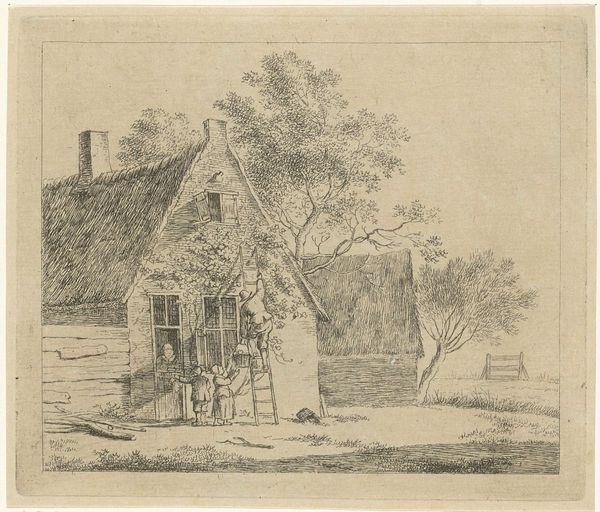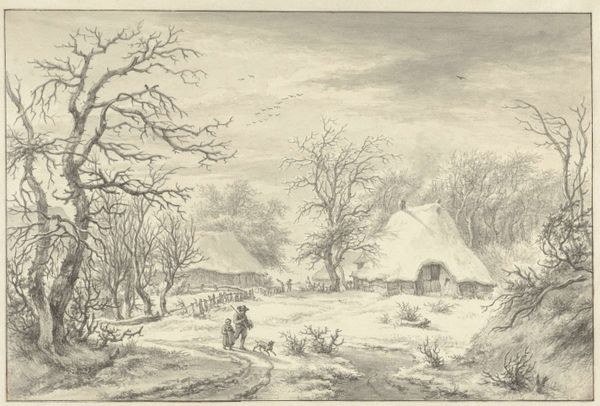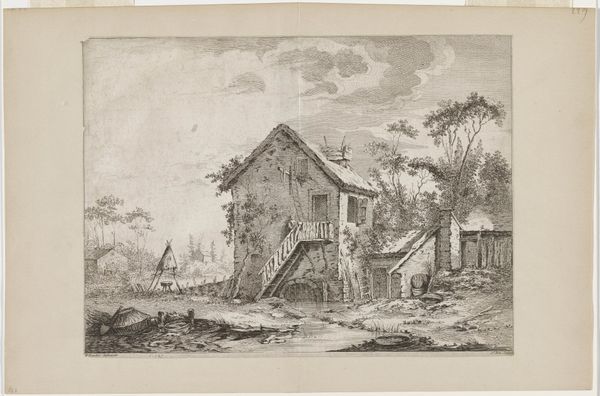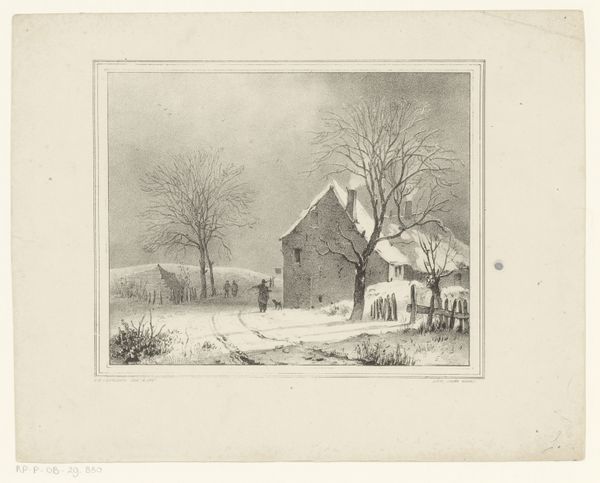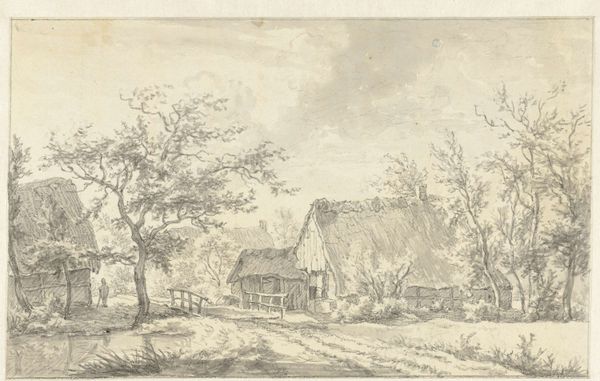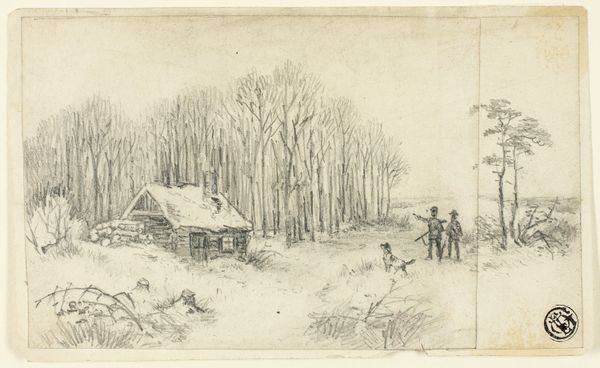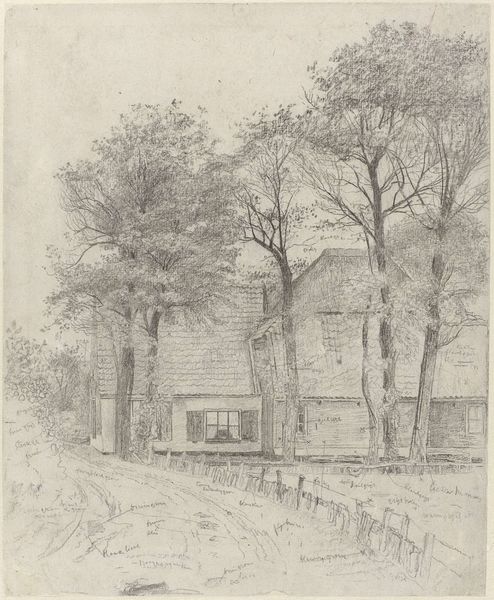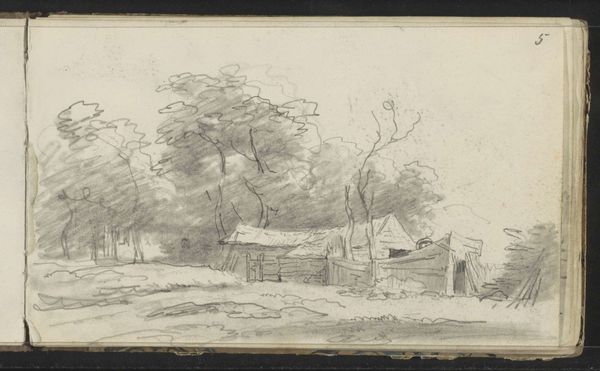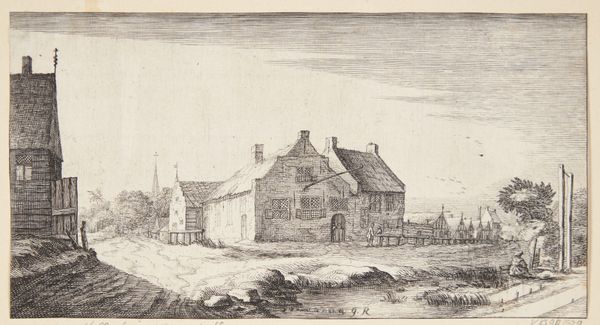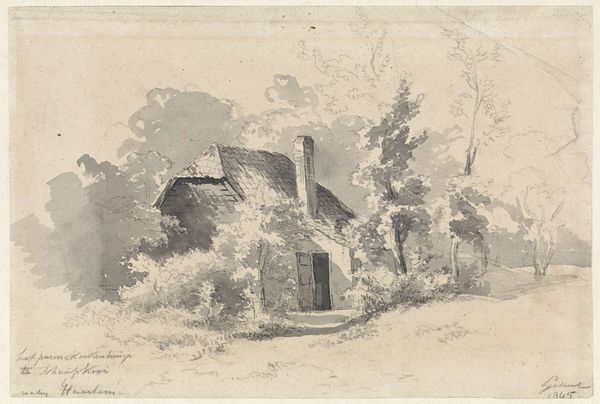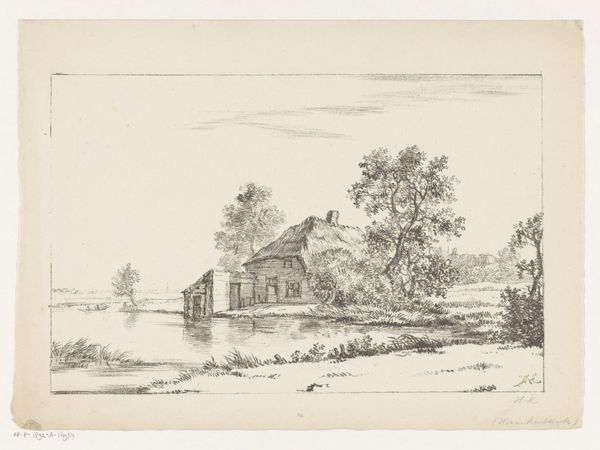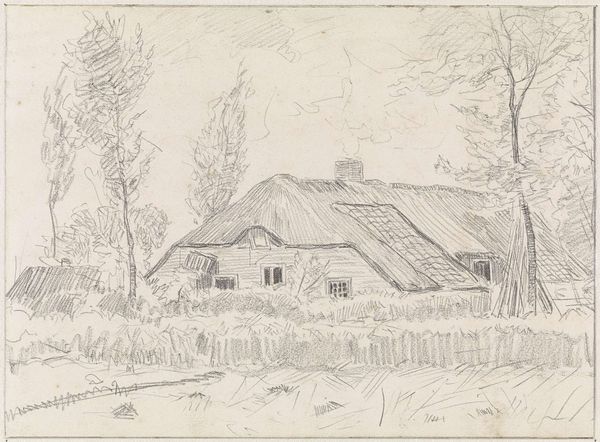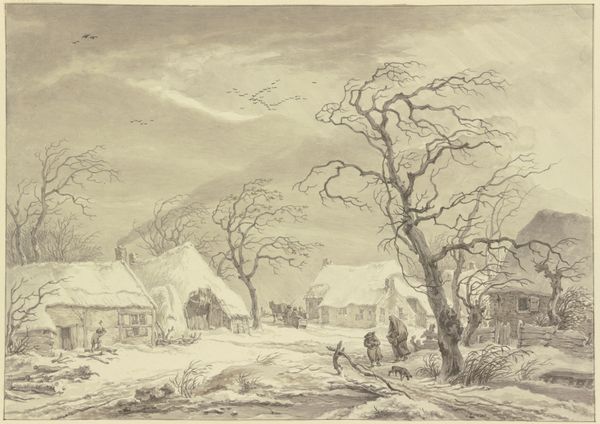
drawing, paper, ink
#
landscape illustration sketch
#
drawing
#
light pencil work
#
dutch-golden-age
#
pen illustration
#
pen sketch
#
pencil sketch
#
old engraving style
#
landscape
#
paper
#
personal sketchbook
#
ink
#
pen-ink sketch
#
15_18th-century
#
pen work
#
sketchbook drawing
#
genre-painting
Dimensions: height 194 mm, width 249 mm
Copyright: Rijks Museum: Open Domain
Curator: This delicate drawing, created by Jacob Cats in 1762, is titled "De schilderskroeg Zeeburg te Muiderberg," which translates to "The Painter's Tavern Zeeburg at Muiderberg." It resides here at the Rijksmuseum. Editor: It’s like stepping into a whisper, isn’t it? So muted and subtle. Makes me want to brew some tea and write a letter with a quill. What medium did Cats use, by the way? It almost looks like it was drawn by sunlight. Curator: Indeed, there’s a certain tranquility to it. Cats rendered the work with pen and ink on paper, utilizing a light pencil to bring form to this Dutch scene. What I find fascinating is how Cats captures a slice of everyday life—a tavern nestled in a landscape. This work offers a glimpse into the social fabric of the Dutch Golden Age and challenges the romanticism that surrounds historical narratives of the tavern experience by capturing it with an almost nonchalant lightness. Editor: "Nonchalant lightness," I like that. To me, the mood is almost dreamlike. The figures feel suspended in time. I'm curious about those little details—the folks outside the tavern. Are they really painters? Or is that a misnomer, perhaps a place frequented by travelers of all stripes? Curator: That’s the brilliance of genre painting isn't it? We're given just enough information to ignite our imagination. Perhaps “painter” wasn’t literal; it may have alluded to artisans or those simply passing through. These taverns were more than just places to drink, they functioned as important social and economic hubs. Think of this drawing as a sort of visual archive of that reality, a microcosm of Dutch society captured with remarkable intimacy. Editor: A microcosm—absolutely! The work highlights the Dutch countryside. And, I get a distinct sense of community. You know, looking at it now, it also kind of makes me think about accessibility, about who had the time and the means to while away the hours at such a place? There's something so familiar about it. Curator: Indeed. It provokes complex questions about social hierarchies, labor, and leisure. This isn't just a pretty landscape; it's an artifact that demands interrogation, revealing nuances about Dutch social relations during that period. Editor: Well, now I see it through completely different eyes. It goes to show you, art always has more secrets to reveal. Curator: Precisely! Hopefully, the dialogue itself sparks even more critical inquiries.
Comments
No comments
Be the first to comment and join the conversation on the ultimate creative platform.
